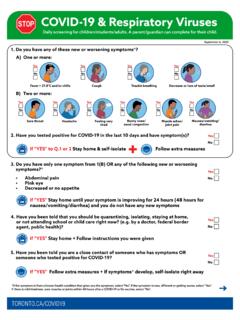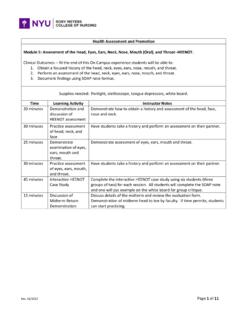Transcription of GUIDELINES FOR PATIENT-CONTROLLED ANALGESIA …
1 VA SAN DIEGO HEALTHCARE SYSTEM MEMORANDUM 118-28 SAN DIEGO, CA Page 1 of 6 GUIDELINES FOR PATIENT-CONTROLLED ANALGESIA (PCA) AND PATIENT-CONTROLLED EPIDURAL ANALGESIA (PCEA) FOR ACUTE pain MANAGEMENT 1. PURPOSE: To assure the safe and effective use of patient controlled ANALGESIA (PCA) and patient controlled epidural ANALGESIA (PCEA) for the intravenous and epidural administration of opioids and anesthetics. PCEA administration of opioids and local anesthetics is also guided by MCM 125-2, Epidural ANALGESIA . 2. POLICY: PCA or PCEA will be used for the treatment of patients in moderate to severe pain when oral or intermittent parenteral opioids and analgesics are contraindicated or considered to be less efficacious.
2 Only the patient can push the PCA button. A patient must be able to physically push the PCA button, no nurse, family member, or healthcare provider is authorized to push the patient s button (no PCA by proxy) at any time. If a patient requires supplemental doses to achieve ANALGESIA , the nurse will administer the dose through the pump as ordered. 3. DEFINITIONS: a. PCA or PCEA Dose: A dose of medication ordered by the provider, programmed into an infusion pump by the RN and activated by the patient when s/he pushes the PCA button. b. Bolus Dose: A dose of medication ordered by the provider, programmed and activated by the nurse, and delivered via an infusion pump during an active PCA infusion to maintain or reestablish ANALGESIA .
3 C. Loading Dose: Individualized dose given via an infusion pump at the initiation of PCA to achieve ANALGESIA in a timely manner. d. Lockout Interval: The period during which the PCA or PCEA dose cannot be delivered more than one time (range 5-45 minutes, typical interval 8 minutes for PCA and 20-30 minutes for PCEA). e. Continuous Infusion (also known as basal rate): Low dose constant infusion used to augment PCA in patients who are not well controlled on PCA alone. A continuous infusion will always be used with PCEA. f. Guardrails Limit: Built-in programmed safety parameters of medication dosing for medications in the PCA profile or in the Epidural profile.
4 Minimum and maximum dosing ranges considered safe for the majority of patients have been pre-programmed in the infusion pump. VA SAN DIEGO HEALTHCARE SYSTEM MEMORANDUM 118-28 SAN DIEGO, CA Page 2 of 6 g. pain Intensity Scale: A visual intensity scale where 0 is no pain and 10 is the worst pain possible. h. Opioid Tolerant: A patient who has been taking opioids pre-operatively or has developed a physical tolerance to opioids. i. Opioid Na ve: A patient who has little to no experience with opioid medications or has not recently taken opioids. j. Sedation Scale: The modified Pasero Sedation Scale is used to assess and reassess a patient during PCA and PCEA therapy to avoid opioid induced over sedation.
5 K. EtCO2 Monitoring: Capnography or end-tidal (exhaled) carbon dioxide (CO2) monitoring. Provides non-invasive, continuous measurement of respiratory rate and exhaled CO2 concentration over time and is measured at peak expiration. Safety feature to be used with all patient receiving PCA and PCEA infusions (exception: mechanically ventilated and end of life comfort care patients ). l. SpO2 Monitoring: Selected patients will require SpO2 monitoring during PCA and PCEA infusions. 4. RESPONSIBILITIES: a. Provider: The provider will approve initiation of PCA and order PCA with supplemental doses using the electronic order set.
6 They will review and rewrite all other analgesics, sedatives and anxiolytics at the time PCA is indicated. The provider will document the effectiveness of PCA and any side effects in the daily progress notes. b. Anesthesia Provider: Anesthesia service will initiate all PCEA orders and make all order modifications. The Anesthesia pain Service will document the effectiveness of PCEA and any side effects noted in the daily progress notes. Anesthesia Service will assess the patient and give all supplemental doses. c. Nursing: Nursing will instruct each patient selected for PCA or PCEA on the correct method of use, how pain will be assessed, and monitoring expectations.
7 Upon initiation of PCA/PCEA and every four hours nursing will assess and document BP, pulse, RR, pain score, sedation score and EtCO2 on the PCA/ Epidural flow sheet (Attachment A). Nursing will provide the same assessment and documentation for patients receiving continuous epidural infusions and/or PCEA plus an assessment of motor/sensory function per policy 125-2. VA SAN DIEGO HEALTHCARE SYSTEM MEMORANDUM 118-28 SAN DIEGO, CA Page 3 of 6 d. Respiratory Therapist: The respiratory therapist will be available to consult with the nursing regarding respiratory status, EtCO2 monitoring, accuracy and proper functioning of the EtCO2s module on all patients receiving PCA and PCEA.
8 E. Pharmacists: The pharmacist will consult with the physician regarding initiation of PCA when needed. Consultation includes a thorough chart review to assess patient history, appropriateness of PCA, expected duration of infusion and allergies to all opioids. The pharmacist will deliver the tubing set, and medication to the patient care area. 5. PROCEDURES: a. patients must be mentally capable and able to understand and physically perform PCA or PCEA. The patient will be instructed by the RN prior to the initiation of PCA or PCEA. Instruction will include teaching the patient that only s/he can push the PCA button.
9 This education will be documented on the PCA flow sheet or in the patient's progress notes as an education clinical reminder. b. Physicians will use computerized order sets for ordering PCA and PCEA. PCA orders will include bolus doses to reestablish ANALGESIA or treat painful treatments. All previous orders for opioids will be discontinued by a physician's order prior to initiation of PCA and rewritten if necessary. All orders for sedatives, analgesics, and anxiolytics will be reviewed and re-written. c. The Admitting Service can order oral opioids along with PCA without a continuous infusion. When starting an oral opioid the PCA continuous infusion must be discontinued in both opioid tolerant and na ve patient.
10 D. All continuous infusion rates will be reevaluated every 24-hours and re-ordered by the Primary Care Physician (PCP) in accordance with MCM 11-08. e. If the patient's pain is poorly controlled at the time PCA is started, a loading dose (to be given via the PCA pump) is recommended. Before initiating a continuous infusion, the patient's clinical status will be evaluated for treatable causes of uncontrolled pain (wound infection, acute abdomen, pulmonary complications, etc.). f. No other opioids or other routes of administration will be used in conjunction with PCEA, unless ordered by the Anesthesia pain Service.













